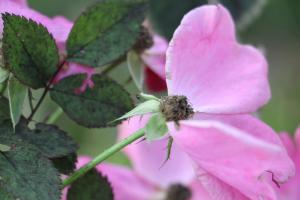Introduction
Water pollution is becoming an increasingly pressing issue around the world, with devastating effects on the environment and human health. One area of concern is the impact of water pollution on plants, which play a critical role in our ecosystem. This article will explore the various ways in which water pollution affects plants and what can be done to mitigate its effects.
Impacts of Water Pollution on Plants
One major impact of water pollution on plants is the destruction of their natural habitats. Polluted water can contain a range of harmful pollutants such as heavy metals, pesticides, and fertilizers that can directly harm plant life or destroy their habitats. This can lead to a decline in biodiversity and the extinction of plant species, which has far-reaching implications for the ecosystem and humans.
Another way in which water pollution affects plants is by disrupting their growth and development. Chemical pollution can contaminate the soil and water, inhibiting plants from absorbing essential nutrients that are necessary for their growth. This can cause stunted growth and reduced yield, which can have severe economic implications for farmers and other industries that depend on plant growth.
Furthermore, water pollution can also affect the reproductive success of plants. Polluted water can contain endocrine-disrupting chemicals that interfere with the reproductive systems of plants, leading to reduced germination rates and compromised seed production. This can have a ripple effect throughout the ecosystem, as reduced seed production can lead to reduced food and habitat for wildlife.
Examples of Water Pollution on Plants
One example of the impact of water pollution on plants is the case of eutrophication. Eutrophication is the excessive growth of algae and other aquatic plants in water bodies that are contaminated with nutrients such as nitrogen and phosphorus. This can consume all the oxygen in the water, leading to a process called hypoxia in which fish and other aquatic animals suffocate and die. This can have devastating effects on the ecosystem, and it all starts with water pollution.
Another example is the impact of acid rain on forest ecosystems. Acid rain is caused by the release of sulfur dioxide and nitrogen oxide into the atmosphere, which react with water vapor to form sulfuric acid and nitric acid. When this acid falls back to the ground, it can destroy the leaves and other plant parts of trees, reducing their ability to photosynthesize and produce food. This can have a cascading effect on the ecosystem, ultimately leading to a decline in biodiversity.
Mitigating the Effects of Water Pollution on Plants
There are several ways in which the impact of water pollution on plants can be mitigated. One solution is to reduce the amount of harmful pollutants being released into water bodies. This can be achieved through more stringent regulations on industries and agriculture, as well as better management of wastewater treatment plants.
Another solution is to restore polluted ecosystems through targeted restoration efforts. This can involve the removal of pollutants from the soil and water, as well as the planting of new vegetation to restore habitats for plant and animal life. Resource managers can also introduce species that are more tolerant to pollutants to improve the diversity of plant and animal populations.
Conclusion
Water pollution has far-reaching implications for our environment, and plant life is no exception. By understanding the various ways in which water pollution affects plants, we can work towards solutions to mitigate its effects and restore the health of our ecosystems. Whether it's reducing pollutant sources or restoring ecosystems, we all have a part to play in protecting the plants that form the foundation of our planet's biodiversity.

 how many times do yo...
how many times do yo... how many planted tre...
how many planted tre... how many pine trees ...
how many pine trees ... how many pecan trees...
how many pecan trees... how many plants comp...
how many plants comp... how many plants can ...
how many plants can ... how many plants and ...
how many plants and ... how many pepper plan...
how many pepper plan...
































